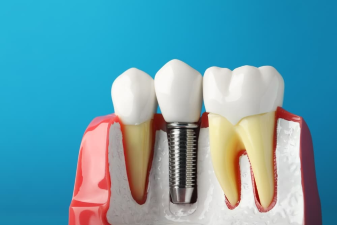As parents, many of us want to ensure that our children have healthy teeth and a confident smile. Part of achieving this may involve orthodontic treatment, particularly braces. However, deciding if and when your child needs braces can be a complex task.

Understanding Orthodontics
What Are Braces?
Braces are dental devices designed to straighten teeth, correct bite issues, and improve overall dental alignment. They consist of brackets that are attached to the teeth, wires that connect the brackets, and various accessories that may be used based on an individual’s specific orthodontic needs.
How Do Braces Work?
Braces work by applying gentle pressure over time, gradually moving teeth into their correct positions. The wire increases tension as it is tightened, allowing for controlled movement. The duration of treatment typically depends on the severity of misalignment and the type of braces used.
Different Types of Braces
-
Traditional Metal Braces: Made from stainless steel, these are the most common type of braces. They are highly effective but may be visible when the child smiles.
-
Ceramic Braces: These are similar to traditional braces but use clear or tooth-colored materials, making them less noticeable.
-
Lingual Braces: These are placed on the backside of the teeth, making them virtually invisible from the front.
-
Clear Aligners: Brands like Invisalign offer a series of clear trays that can gently shift teeth into alignment, providing a discreet alternative to traditional braces.
Why Early Orthodontic Evaluation Is Important
The American Association of Orthodontists recommends that children have their first orthodontic evaluation by age seven. While this may seem early, several factors make this timing beneficial:
- Early Detection: Identifying issues early allows for timely intervention, which can simplify later treatment.
- Guiding Growth: Early treatment can guide the growth of the jaw and teeth, preventing more invasive procedures later.
- Preventing Complications: Addressing dental issues sooner can prevent complications with chewing, speech, and even jaw function.
Early Signs Your Child May Need Braces
As a parent, being aware of the early signs that indicate your child may need braces is crucial. Here are key indicators to watch for:
1. Crowded or Crooked Teeth
If your child’s teeth appear crowded or overlap, this may suggest that there is not enough space for the teeth to align properly. Crooked teeth can affect not only aesthetics but also oral hygiene, making it challenging to brush and floss effectively.
2. Gaps Between Teeth
While some gaps between teeth can be normal, especially in young children who are losing baby teeth, persistent gaps may indicate that teeth are not shifting properly. Gaps can also impact bite function and may require orthodontic correction.
3. Bite Issues
Bite issues, or malocclusions, arise when the upper and lower teeth do not fit together correctly. Common types of malocclusions include:
- Overbite: The upper front teeth overlap significantly over the lower teeth.
- Underbite: The lower teeth extend beyond the upper teeth.
- Crossbite: Upper teeth do not properly align with lower teeth when biting down.
These issues can affect chewing, speaking, and overall dental alignment, making early assessment essential.
4. Thumb Sucking and Oral Habits
Prolonged thumb sucking, pacifier use, or other oral habits can lead to misalignment of teeth and changes in jaw development. If your child continues these habits past the age of four, it may be worth consulting an orthodontist to assess potential effects on dental alignment.
5. Difficulty Chewing or Biting
If you notice that your child struggles to chew food properly or experiences discomfort when biting, this could indicate an underlying dental issue. Difficulty in biting can stem from misaligned teeth or issues with the jaw.
6. Speech Difficulties
Some children experience speech difficulties due to dental misalignment. If your child has a lisp or other speech-related issues, it may be beneficial to consult a dentist or speech therapist to determine if orthodontic treatment could help.
7. Mouth Breathing
If your child consistently breathes through their mouth instead of their nose, it may suggest dental or structural issues affecting the airways. Mouth breathing can lead to various complications, including dental misalignment and increased susceptibility to dental decay.
8. Oral Pain or Discomfort
If your child frequently complains of pain or discomfort in their teeth or jaw, this could suggest issues related to dental alignment. Regular headaches or jaw pain should be evaluated by a dental professional to determine if braces may be necessary.
9. Early or Late Loss of Baby Teeth
Children typically start losing baby teeth around age six, with most losing them by age twelve. If your child loses teeth unusually early or late, it can interfere with the proper alignment of permanent teeth and may necessitate orthodontic evaluation.
10. Changes in Facial Appearance
If you notice a significant change in your child's facial structure or appearance, this may indicate dental developments requiring professional evaluation. Uneven jaw growth or facial asymmetry can signal the need for orthodontic treatment.

The Importance of Professional Evaluation
The Role of Orthodontists
An orthodontist specializes in diagnosing, preventing, and treating dental and facial irregularities. They provide comprehensive assessments of your child's oral health and alignment and can recommend suitable treatment options.
What to Expect During the Evaluation
During the initial orthodontic evaluation, the orthodontist will:
-
Conduct a Thorough Examination: This may include a visual examination of the teeth, jaw, and overall facial structure.
-
Take X-rays: X-rays help the orthodontist get a clearer picture of the positioning of teeth roots, jaw structure, and potential misalignment.
-
Discuss Findings: The orthodontist will explain any issues identified and recommend potential treatment options, including the timing for starting treatment if necessary.
Benefits of Early Treatment
Early orthodontic treatment can provide several advantages, such as:
1. Reducing the Need for Future Work
Intervening at an early age can prevent the need for more extensive treatments later, such as extractions or surgical interventions.
2. Improving Self-Esteem
Correcting dental misalignment can significantly enhance a child’s self-esteem and confidence as they grow older, positively affecting social interactions and peer relationships.
3. Enhancing Oral Health
Proper alignment allows for easier brushing and flossing, reducing the risk of dental decay and gum disease.
4. Promoting Functional Improvements
Early treatment can improve the functionality of the teeth and jaw, leading to better chewing, speaking, and overall oral function.
5. Aesthetic Benefits
Straightening teeth early can lead to an improved appearance, which can have lasting effects on a child’s confidence and self-image.
Types of Early Treatment
If early orthodontic intervention is deemed necessary, there are several options available:
1. Space Maintainers
For children who lose a primary tooth early, space maintainers can help preserve the space in the dental arch until the permanent tooth erupts.
2. Palatal Expanders
These appliances can widen the upper jaw to create more space for teeth, correcting issues related to crossbites or overcrowding.
3. Interceptive Orthodontics
This refers to early intervention strategies, which may include partial braces, to guide the growth of teeth and jaw as the child develops.
4. Retainers
For some children, a retainer may be used to hold teeth in their new position after orthodontic treatment or to prevent further misalignment.
Conclusion
As a parent, being proactive about your child’s dental health is crucial. Recognizing the early signs that may indicate the need for braces can lead to timely intervention and improved oral health outcomes.
Early orthodontic evaluation, ideally by the age of seven, can help address potential issues while ensuring that your child develops a healthy, beautiful smile for the future. By understanding the signs and consulting with an orthodontist, you empower your child to achieve their best dental health.



